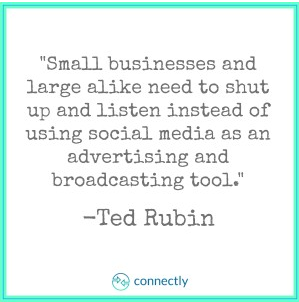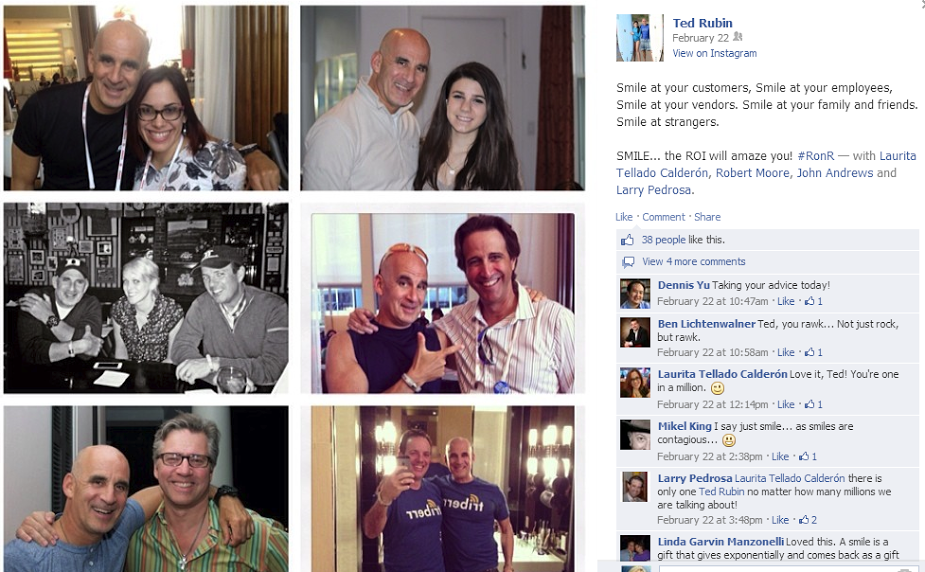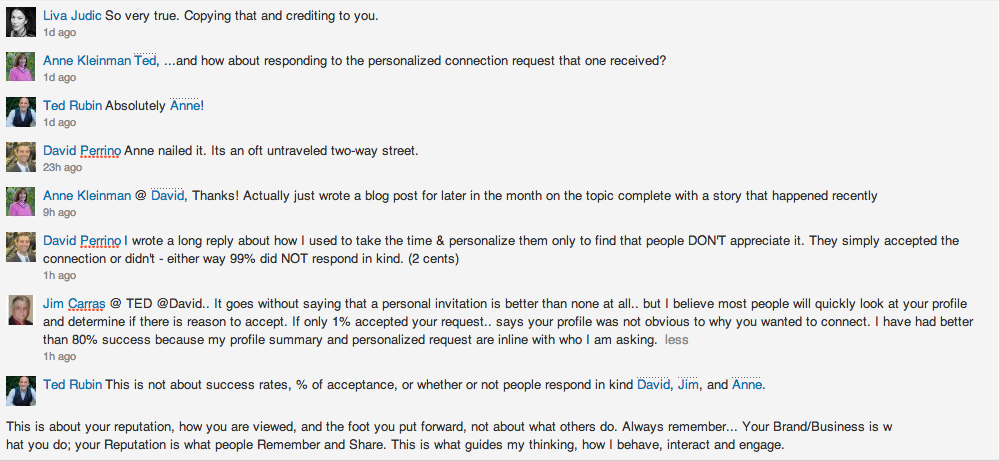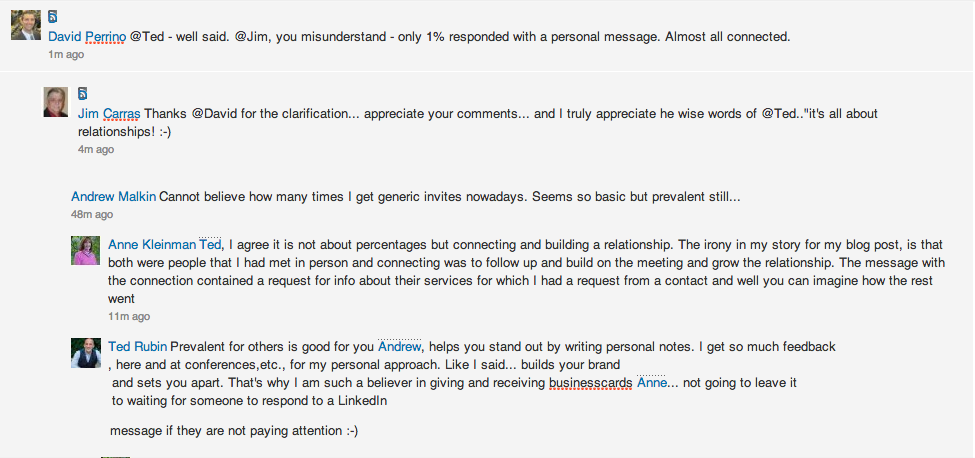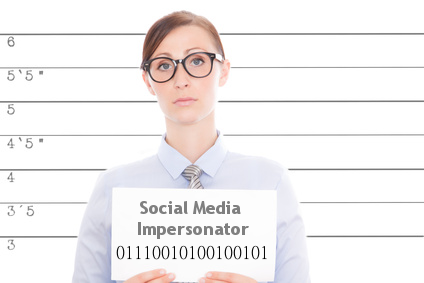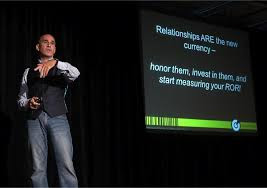@tedrubin
The Shorty Interview with Ted Rubin
How much time do you spend online?
Many hours per day… depending upon whether I am in meetings, speaking or at an event or brand meeting.
How do you imagine Twitter changing?
I don’t imagine, but my use will evolve as necessary w/the platform the same as it has with the changes to Facebook. It’s about the people.
Who do you admire most for his or her use of Twitter?
@ValaAfshar
What’s the funniest celebrity tweet you saw in this past year?
I don’t pay too much attention.
How do you pronounce GIF?
JIF
Why’d you start tweeting?
Because back in 2008 @OzSultan told me I had to be on Twitter and @rhollander, believe it or not walked me through the basics.
Small Businesses and Large Alike Need to…
Small businesses and large alike need to shut up and listen instead of using social media as an advertising and broadcasting tool.
They are too worried about who has more Twitter followers and about who has more fans on Facebook. They’re worried about who is getting the message out more consistently on those platforms rather than taking the amazing amount of market intelligence available to them by looking at people that are following them and reading what they are writing on their own pages.
Businesses need to spend less time tweeting and posting to Facebook, and more time reading, listening and understanding what it is their customers really want. They can’t expect to use social media only when it is convenient for them and expect customers to remain engaged.
Way too few companies are empowering their employees on social media, seeing it as a threat instead of a benefit. Small business needs to recognize that their best advocates are their employees. Empower your employees and they will power your brand.
What’s the ROI of a Smile?
I sent something out on Instagram recently—a photo collage of the smiling faces of friends—with the following comment: “Smile at your customers, Smile at your employees, Smile at your vendors, Smile at your family and friends, Smile at strangers. SMILE… the ROI will amaze you!” It got over 30 likes almost immediately. I sent the same message (and photo) out on Facebook, with even more engagement.
People commented how good it made them feel, and some said they were taking the message to heart and spreading the word. People want to be happy! And when you send them a photo with a smiling face, it generates warm feelings and a wish to keep feeling happy.
Important Advice for Reaching Out via LinkedIn and Facebook
A little advice for people here using LinkedIn and Facebook, more of a very strong suggestion… stop sending out invites without a personalized note, and best if that note offers a reason you want to connect.
Just saying people… it’s all about building relationships, not just being connected, and the first step of that relationship is the introduction… especially if we have never met!
Voting for Marketing Book of The Year is Open & Return on Relationship is on the List, #RonR…
Below originally posted at Marketing Book of The Year 2014
*Vote Here… http://www.marketingbookoftheyear.org/vote-and-win*
| Welcome to Marketing Book of The Year 2014.2013 was a very successful year for marketing books. We saw lots of different titles being published and covering most marketing aspects. |
Should Social Media Outsourcing be Illegal? ~guest post via @BLichtenwalner
Many companies completely outsource social media management. These companies may have good reasons for this decision. Yet, when outsourced, social media communications misrepresent reality. In fact, is it possible that completely outsourcing your social media accounts should be outlawed? Below are a couple issues to consider:
Real Time Marketing – the Good, the Bad and a better Customer Experience
Getting the right message to the right people at the right time is an age-old marketing mantra. And how you hit that sweet spot has been foremost in the minds of every marketer since people started selling things to each other. That hasn’t changed over the years, but our ability to connect with each other and gather information about each other has. So you would think that with today’s Real-Time Marketing (RTM) and all this technology at our fingertips we could hit the bull’s eye every time, right? Well… we’re getting there, but it’s still a rocky road. Sometimes when we try to use advances in technology to get in front of more prospects, we get some push-back, especially online and in social channels. However, that depends on how the information gets used.
Consider Social Customer Service to Establish Social Media ROI ~via @ignitesma
This post is right on point and makes a perfect case for Return on Relationship (#RonR) enhancing ROI. See below for the screen shot of a coincidental engagement I had with United Airlines right before I saw this post from John.
Originally posted at Ignite Social Media
“Create smiles… they are the currency of conversations.” #RonR – Ted Rubin
When I tweet a brand, like a growing number of consumers, I expect them to respond, especially if I have a question or a problem. For many, Twitter has become the customer service contact of choice. Even when I don’t have an inquiry, it’s nice to know the brand is there in a humanistic sort of way. Like I know@AmericanAir is there for me, even when i’m not asking for anything:
Creativity in Social Media
I think creativity in social media is at the heart of the problem of realizing and executing the true value of social. Save the creativity for advertising “campaigns,” and get down to the basics of relationship building when it comes to discussions about social and connecting with consumers.
The payoff is a long-term and personal relationship that creates brand advocates and an emotional connection that drives influence. To achieve such an enriching relationship, communication must be relevant and have a distinct and authentic personality. So steer your efforts, and resources, to “creatively” connecting, value added content, and empowering your employees to be a part of solution.
Brands/Companies that use social beyond the campaign will reap the rewards of customer satisfaction, deeper employee loyalty, more effective knowledge sharing, improved brand reputation, lowered costs, and most importantly, increased revenues.

